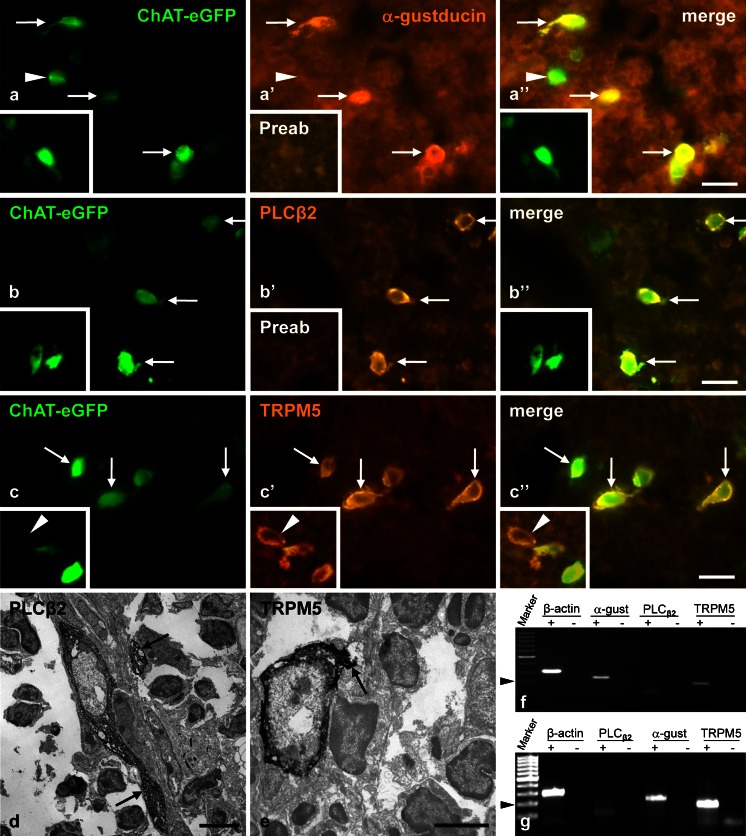Fig. 4.
Cholinergic medullary epithelial cells express components of the canonical taste transduction cascade. a–c Most ChAT-eGFP-positive epithelial medullary cells are immunoreactive (arrows) for the downstream signaling components of the canonical bitter, sweet, and umami taste transduction cascade, namely Gα-gustducin (α-gustducin), phospholipase Cβ2 (PLCβ2), and transient receptor potential melastatin-like subtype 5 channel (TRPM5). Insets in a and b Preabsorption controls (Preab) in which the primary antibody had been saturated with cognate peptide prior to application to the tissue section. Arrowheads in a and in inset in c indicate single cells displaying only one marker. Bars 20 μm. d, e Ultrastructural immunohistochemistry, pre-embedding technique. PLCβ2-immunoreactive (d) and TRPM5-immunoreactive (e) epithelial cells extending processes (arrows). a, b Male aged 25 weeks. Inset in a, b Male aged 16 weeks. c Male aged 31 weeks. Inset Female aged 25 weeks. d, e 31 weeks. Bars 5 μm. f, g RT-PCR, ethidium-bromide-stained agarose gels. Gα-gustducin-specific (α-gust), PLCβ2-specific (weakly), and TRPM5-specific products were amplified from whole thymus (f) and thymic cells isolated by aid of TRPM5-antibody and magnetic beads (g). Arrowhead indicates 200 bp marker. PCR was conducted with (+) and without (-; serving as negative control) reverse transcription of RNA. β-Actin served as a housekeeping gene

